 Menu
Menu
 Menu
Menu
The Nazis spent considerable efforts psychologically preparing citizens for war. The Ministry for People’s Enlightenment constantly told citizens that Germany was under threat from liberalism, communism, socialism, Jews, and foreign nations. These satirical cartoons from Die Brennessel—courtesy Randall Bytwerk’s German Propaganda Archive—capture just a few of these portrayals.
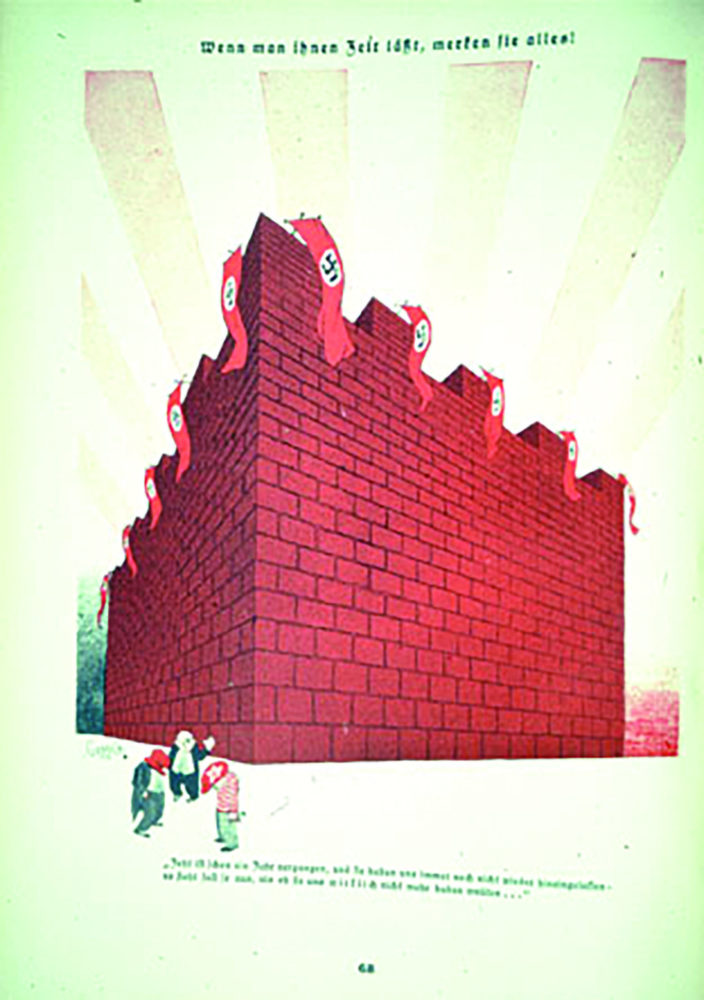
“If you give people enough time, they get the idea.” A Jew, a communist and a socialist are talking, “It’s been a year and they still have not let us back in. It is beginning to look like they don’t want us...” (30 January 1934)
The Nazis institutionalized their racist beliefs in 1935 through the Nuremberg Laws. One law stripped Jews of their citizenship; the other law prohibited marriage or sexual relations between Germans and Jews. The laws were soon expanded to include Roma and black people, and helped pave the way for the Nazis killing an estimated eleven million people, including six million Jews. While the Nazis were undeniably the worst offenders, Germany was not the only country rife with antisemitism at the time. Much of the world closed their doors to Jewish refugees from Germany. For example, Canada only let in 5,000 Jewish refugees between 1933 and 1945.
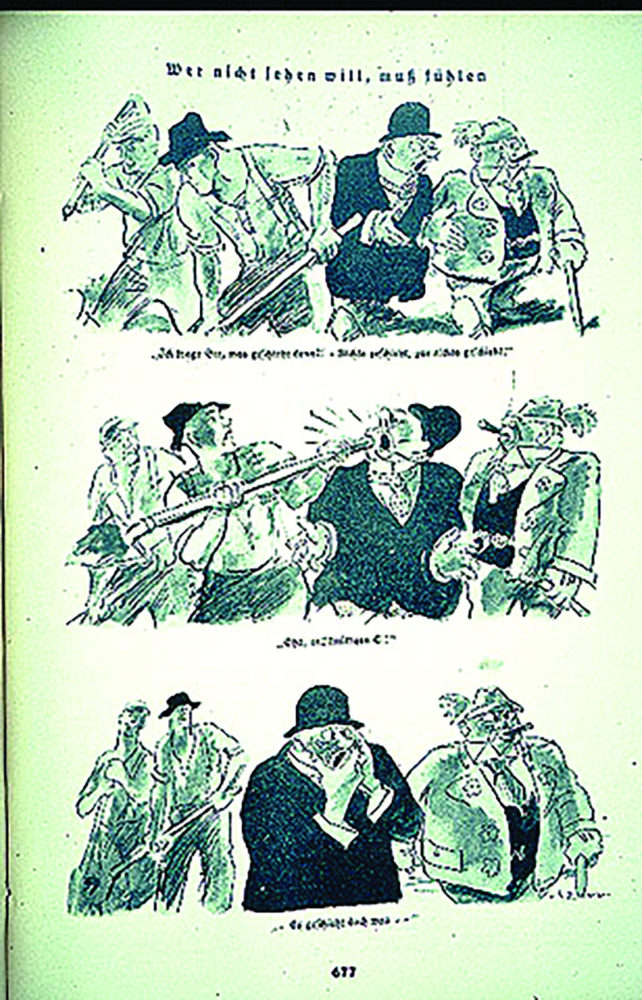
“Those who can’t see will feel it...” In the top frame, two men are complaining that nothing is happening in Germany. The two workers are annoyed, so one “accidentally” directs his shovel handle to the jaw of a complainer. In the bottom, one worker says to another: “Something happened after all...” This was part of a general Nazi campaign against complainers. (23 October 1934)
It is believed there was much discontent with the Nazi government amongst Germans in 1934. It was largely because people in the peasant and working classes were disappointed with the early progress of Nazi economic policies.
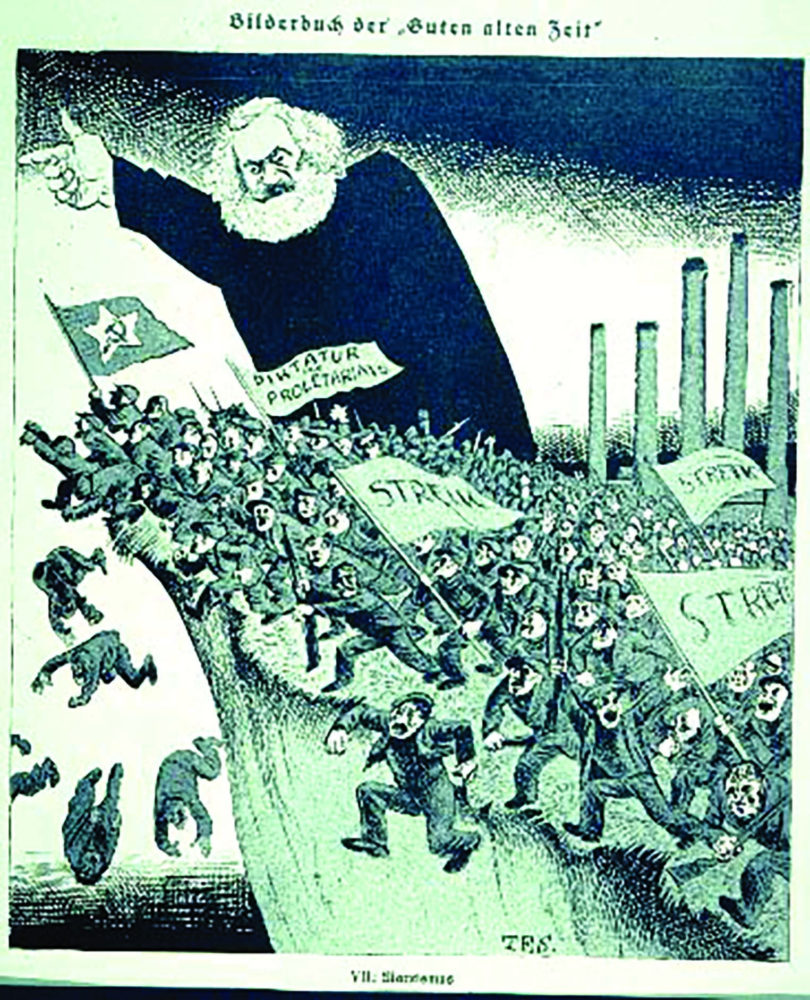
“A Scene from the ‘Good Old Days.’ - MARXISTS” The claim is that Marxism was leading German workers to their destruction before Hitler’s takeover. (23 January 1934)
Marxism is a worldview developed by Karl Marx. He believed that workers will struggle under a dictatorship of the ownership until a classless society is developed. The German Communist Party subscribed to this ideology and the Nazi party did not. Once the Nazis were in power, they created the Law Against the Founding of New Parties of July 14, 1933. It banned all political parties but the Nazis.
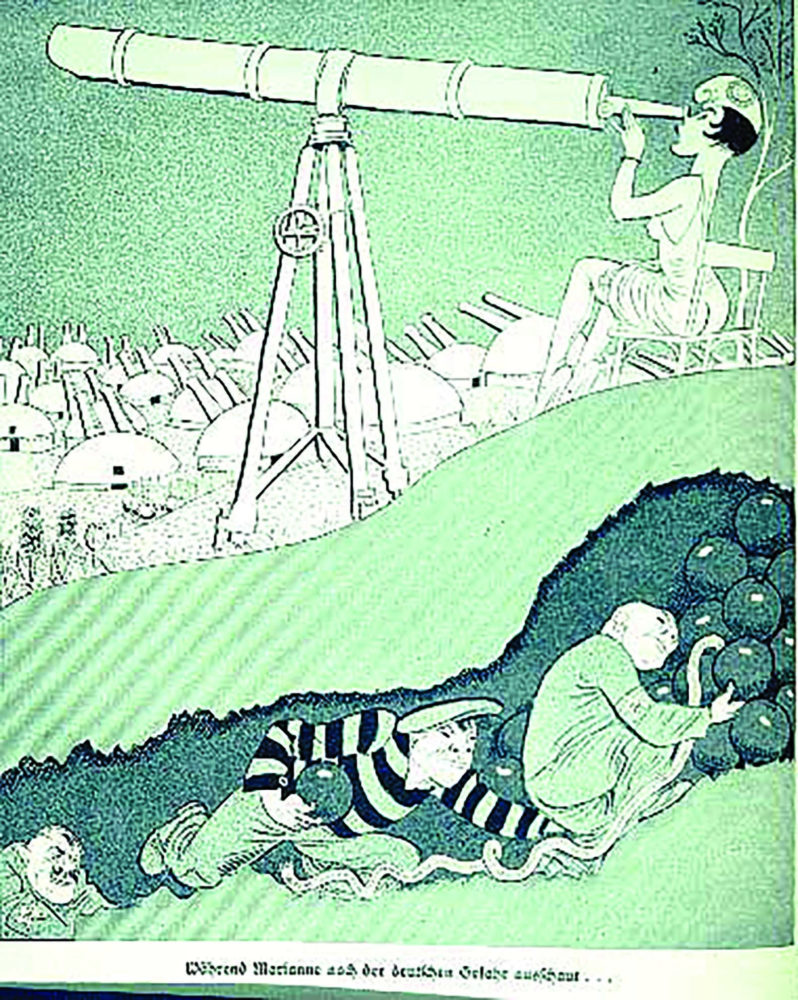
“While France Looks to Danger from Germany...” Marianne, the symbol for France, has all her guns pointing toward Germany while communists are tunnelling in from underneath. (17 April 1934)
France built up the Maginot Line in the 1930s, fortification of their border in case of a German invasion. Also during this time, the Communist Party was experiencing an upswing in support in France.
12. Gustave Gilbert, Nuremberg Diary, (New York: Farrar, Straus and Company, 1947), 278-279.
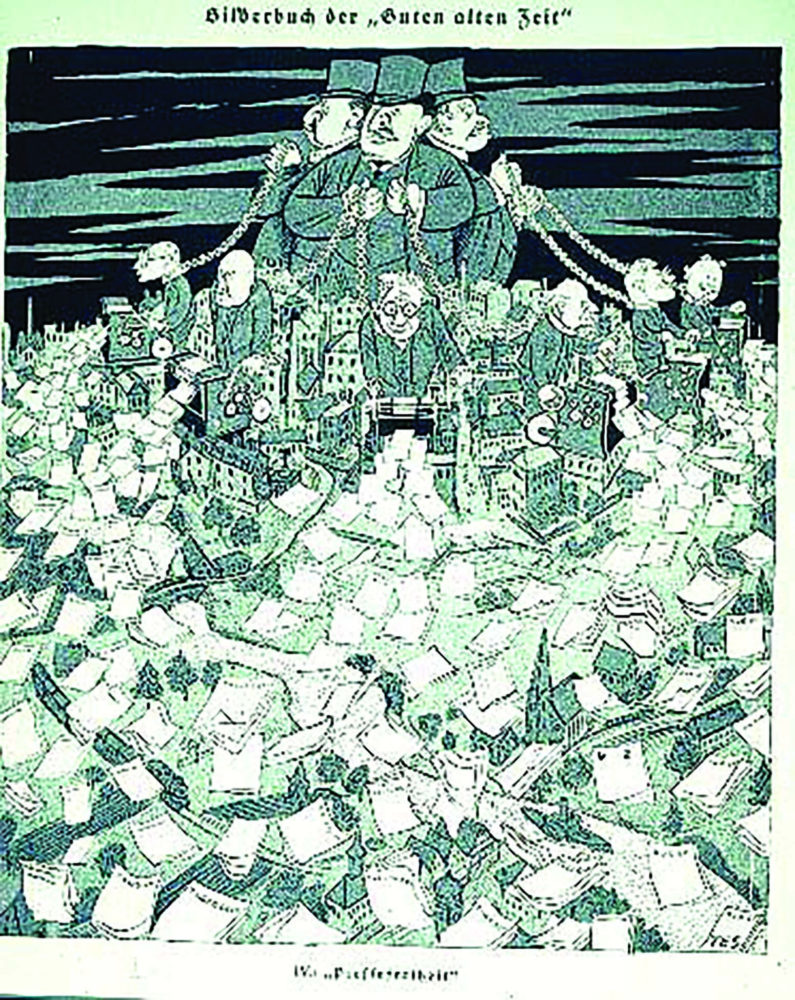
“A Scene from the ‘Good Old Days.’” The theme is freedom of the press. This supposedly depicts the situation before 1933, when the Nazis claimed the Jews controlled the German press. (2 January 1934)
The Editor Law of October 4, 1933 prohibited non-Aryans from being newspaper editors. As well, it prohibited the publication of anything that “tends to weaken the strength of the German Reich, outwardly or inwardly, the common will of the German people, the German defense ability, culture or economy, or offends the religious sentiments of others.”